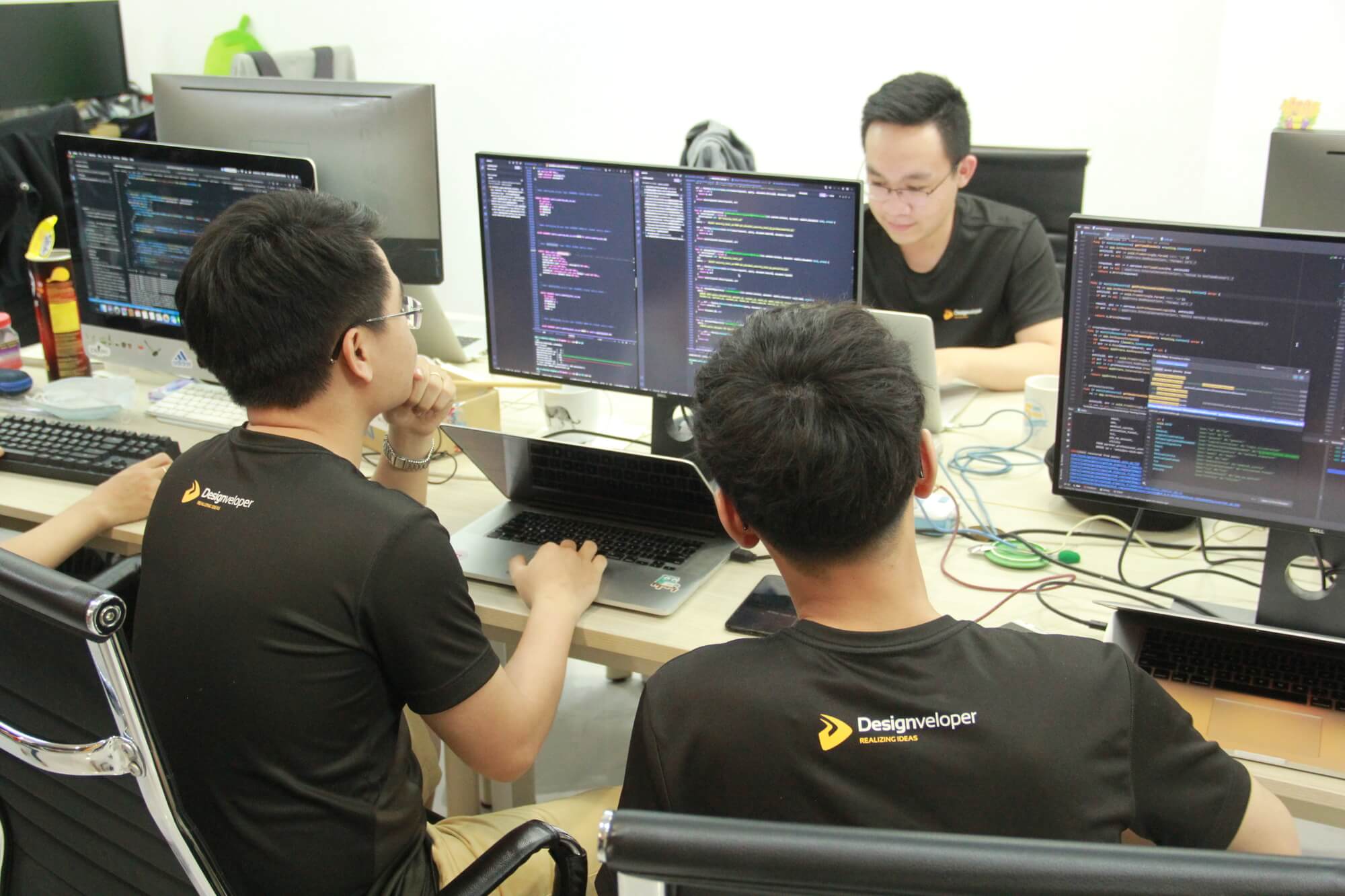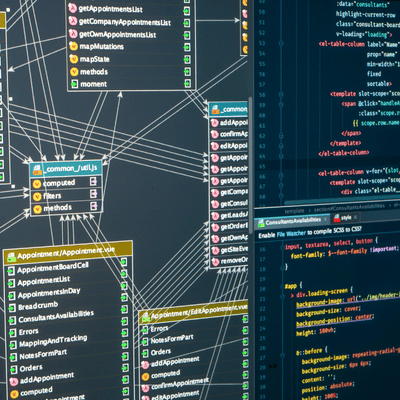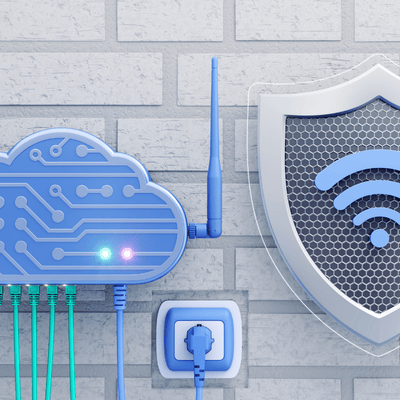
Digital tools and internet connectivity have made many IT roles possible from anywhere. Remote work is now common in the tech industry. For example, one analysis found that U.S. remote job postings now exceed 15% of all jobs – more than triple the share before 2020. In fact, a recent staffing report noted that about 4 in 10 new job postings allowed at least some remote work in early 2025.
Government data back up this trend. The U.S. Bureau of Labor Statistics reports that 34.8% of workers in management and professional occupations teleworked in late 2023. Notably, 64.9% of people in computer and mathematical occupations did at least some work from home during that time. On a global scale, the European Union saw 22% of workers doing some work at home in 2023, up 8 points since 2019. Job boards often list openings under tags like “remote IT jobs” or “work from home IT jobs”, reflecting this demand.
Below are ten IT jobs that can be done from home. Each section, we at Designveloper explain the role and why it fits remote work, with recent stats or examples.
1. Software Developer
Software developers design and code applications for computers, web, and mobile devices. This work from home IT job works because most tasks only require a computer and internet. Developers use tools like version control (Git) and communication apps (Slack, Zoom) to collaborate from home. Many companies hire software developers globally to access talent. For example, 38% of developers surveyed in 2024 said they work fully remotely.

Demand for software developers remains strong. Employers value the flexibility of remote work to attract skilled developers worldwide. Platforms like GitHub and cloud-based development environments mean teams can contribute code from anywhere, reducing the need for a physical office. Developers often improve their skills by participating in open-source projects or online learning, which fits well with a home-office routine.
FURTHER READING: |
1. What Does a Back-End Developer Do? A Detailed Guide |
2. 7 Effective Software Tester Skills You Need to Know |
3. What is Big O Notation? |
2. Web Developer
Web developers build and maintain websites and web applications, focusing on user interfaces (front-end) and server-side logic (back-end). Because websites are hosted online, developers can do work from home IT jobs easily. They use web frameworks, design tools, and content management systems to code and publish sites. Many businesses hire web developers remotely to update or create sites without in-person work.
In practice, a remote web developer might fix a bug on an e-commerce site or design a new interface from home. These jobs often emphasize visual work, so developers rely on online prototypes and cloud-based testing rather than face-to-face meetings. For example, a freelancer might update an existing site or create a landing page, all from a home office, sharing prototypes with clients online and deploying changes directly. This flexibility lets companies use talent around the world.
3. Data Scientist / Data Analyst
Data scientists and analysts collect, clean, and analyze data to help organizations make decisions. They write code in languages like Python or R to build models and generate reports. Since data work can be done on any computer, it suits remote work well. A data analyst can pull data from a cloud database, run analyses, and share results without being on-site. Dashboards and visualization tools can be accessed securely from home. Data analysts also present their findings in video conferences or shared reports, keeping remote teams aligned. The nature of data work allows teams in different cities to collaborate on the same datasets seamlessly.
These work from home IT jobs are in high demand. The U.S. Bureau of Labor Statistics projects that data scientist jobs will grow 36% from 2021 to 2031, far faster than average. Salaries are also high (median over $100,000). Many tech companies allow data teams to work remotely or in hybrid settings. For example, big tech firms like Amazon or Microsoft often have remote data science teams. Data professionals routinely join virtual meetings to discuss findings and collaborate with colleagues in different locations.
4. Cybersecurity Analyst
Cybersecurity analysts protect systems and networks from online threats. They set up firewalls, monitor for breaches, and respond to attacks. Much of this work can be done remotely. For instance, an analyst can review network logs and deploy security patches via secure VPN connections from home. Many organizations provide remote access to security dashboards, so these frequently qualify as work from home IT jobs. Remote cybersecurity roles often include tasks like penetration testing, threat research, and compliance. Analysts use virtual labs to simulate attacks and strengthen defenses without needing to be on-site.
Cybersecurity is a fast-growing field. BLS projects information security jobs to grow 33% from 2023 to 2033, far above average. The median pay (about $125,000) is high. Many companies hire analysts for remote shifts around the clock. For example, financial and healthcare firms use distributed security teams that monitor systems 24/7 from multiple locations. Remote analysts often hold specialized certifications (like CISSP or CEH) and use online labs to test defenses.
5. Cloud Engineer / Cloud Architect
Cloud engineers and architects design and maintain cloud computing systems (like AWS, Azure, or Google Cloud). They work by writing scripts and configuring services through web consoles, so they can easily do this from home. For example, to set up a cloud server, an engineer can log into the cloud management portal via a browser and create virtual machines. Teams use shared cloud environments and automation tools so members can collaborate without an office.

Cloud computing use has become widespread across industries. Many businesses use cloud services extensively. This drives demand for cloud experts, many of whom work remotely. Companies such as Netflix, Adobe, and major retailers have cloud teams distributed globally. Related roles like database architects are also growing (around 10% growth projected by 2031). Remote cloud engineers manage infrastructure and respond to issues from anywhere – for example, by resizing server clusters on demand or migrating data between regions without visiting a data center. Cloud engineers also obtain cloud certifications online, since their work and training are cloud-based.
6. DevOps Engineer
DevOps engineers link development and IT operations. They automate software builds, testing, and deployments. Much of DevOps work is done with online tools. For example, a DevOps engineer might write a script at home that automatically runs tests when new code is pushed to a repository, or configure a cloud deployment from a home computer. Communication tools (like chat apps and video calls) keep the team coordinated across distances. DevOps teams rely on tools like Jenkins, GitHub Actions, or Docker that developers configure remotely. Monitoring tools (like Prometheus or Datadog) let DevOps engineers watch applications from home, with alerts routed to chat or email.
Many companies hire DevOps roles remotely. In fact, industry surveys show that 42% of tech workers are in hybrid roles and 38% fully remote, a category that includes DevOps engineers. These professionals often participate in virtual standup meetings and manage servers via SSH or APIs from home. They also set up infrastructure-as-code (like Terraform) so that configurations are managed in version control. With agile practices, these work from home IT jobs allow one to regularly update dashboards and send alerts through team channels from their home offices.
7. Network/System Administrator
Network and system administrators manage an organization’s IT infrastructure (servers, networks, routers). Modern tools let admins perform many tasks remotely. For example, administrators often use secure remote desktop or SSH to configure servers, and network devices typically offer web interfaces accessible online. Cloud migration has increased this flexibility, since virtual servers in the cloud can be controlled entirely through web dashboards. Administrators also use remote monitoring tools (like Nagios or Zabbix) to receive alerts about system issues. They can fix many problems via SSH or VPN from their home office. Some admins even cover night shifts for other time zones using remote access.
Data show IT infrastructure roles work remotely often. In November 2023, 64.9% of computer and mathematical jobs (including system administrators) were at least partly remote. Companies use remote admin teams to cover maintenance outside office hours. Even tasks like setting up user accounts or applying software updates are done via remote management consoles. For example, a network admin at home might log into a VPN to reboot a router or adjust firewall settings without visiting a data center.
8. IT Support Specialist
IT support specialists (help desk technicians) assist users with technical problems. They can work remotely by using screen-sharing and remote desktop tools, which make this one of the better work from home IT jobs. For example, a support specialist might log into an employee’s computer over the internet to troubleshoot a software issue or guide someone through setting up email. Many companies now hire remote support staff who handle calls and chats from home. For instance, an IT support agent might install updates or security patches on user PCs remotely after hours. They can also create written guides or video tutorials to help users solve common issues without face-to-face sessions.
This role requires good communication over digital channels. Support tools like ticketing systems, knowledge bases, and chat platforms let teams coordinate from different locations. In practice, a remote IT support agent uses a headset and remote access software to fix issues without visiting an office. For example, during the pandemic many support teams proved they could work from home full time, using VPNs and secure connections to solve problems. BLS projects about 6% growth for support specialist jobs from 2023 to 2033, reflecting steady demand for these skills. This flexibility helps companies extend help-desk coverage, as technicians can work from home on shifts.
9. Quality Assurance (QA) Engineer
QA engineers and testers check software for bugs and issues. They write test cases and run automated test scripts, which can all be done from home. For example, a QA engineer can run a suite of tests on a cloud test environment from their home office. They log any defects in a tracking system and work with developers via online chat or video calls to resolve them. QA engineers often use continuous integration systems to run tests on each code change, and many pair-test with developers by screen-sharing sessions, all from a home setup. This allows them to report bugs with video demos if needed.
The software testing industry is growing. Many companies now have dedicated QA teams, some fully remote. For example, mobile app companies and game studios often hire remote testers who run software on different devices and report results online. QA engineers commonly share screens over video to demonstrate bugs, using tools like Selenium or JMeter from home. Automated testing frameworks and continuous integration make it easy to maintain quality without an office.
10. IT Project Manager
IT project managers plan and oversee technology projects. They coordinate teams, schedules, and resources. Modern tools make it possible to do this work remotely. A remote project manager will use platforms like Jira, Asana, or Microsoft Teams to track tasks, hold video meetings, and keep everyone on schedule. For example, they might kick off a project with a virtual workshop on Zoom and then update project plans in the cloud. They rely on shared documents and dashboards to keep track of progress.

Many companies with distributed teams are offering these work from home IT jobs. These managers create online timelines and reports, and communicate with developers, analysts, and clients from anywhere. For example, a project manager may host daily stand-ups over video and update the project board live. The demand for project managers remains strong, and offering remote work helps firms attract experienced leaders who value flexibility.
Conclusion
Overall, these IT roles demonstrate how the tech industry has embraced remote work. Many major tech companies now have fully remote teams that include developers, cloud engineers, and security experts. For example, firms like GitLab and Automattic operate without physical offices. Startup and consulting firms also recruit remote IT specialists to tap a wider talent pool. The global demand for IT skills means remote positions in this field continue to grow.
A broad range of industries offer remote IT positions. Financial, healthcare, and education companies often hire remote engineers and analysts. Even government agencies have telework programs for IT staff. This broad adoption shows that remote IT jobs are available worldwide. For instance, a data analyst might work remotely for a U.S. firm while living abroad, all thanks to online collaboration tools.
In conclusion, roles like software engineer, data scientist, or cloud architect are strong examples of “work from home IT jobs” with good growth and pay. Industry data indicate that tech occupations will remain among the most remote-friendly, with some data-related fields growing rapidly. For aspiring IT professionals, focusing on in-demand skills is important. Obtaining certifications (such as AWS or Security+) and building a strong online portfolio can help land remote roles. Many companies look for self-motivated candidates with good communication, as coordination often happens virtually. Job seekers can also use remote job boards and tech communities (like Stack Overflow) to find opportunities. By staying updated on new technologies and demonstrating the ability to work independently, candidates improve their chances for work-from-home IT positions. Workers in these fields often report higher satisfaction with remote work, as they collaborate effectively while enjoying the convenience of home office setups.






Read more topics





























































